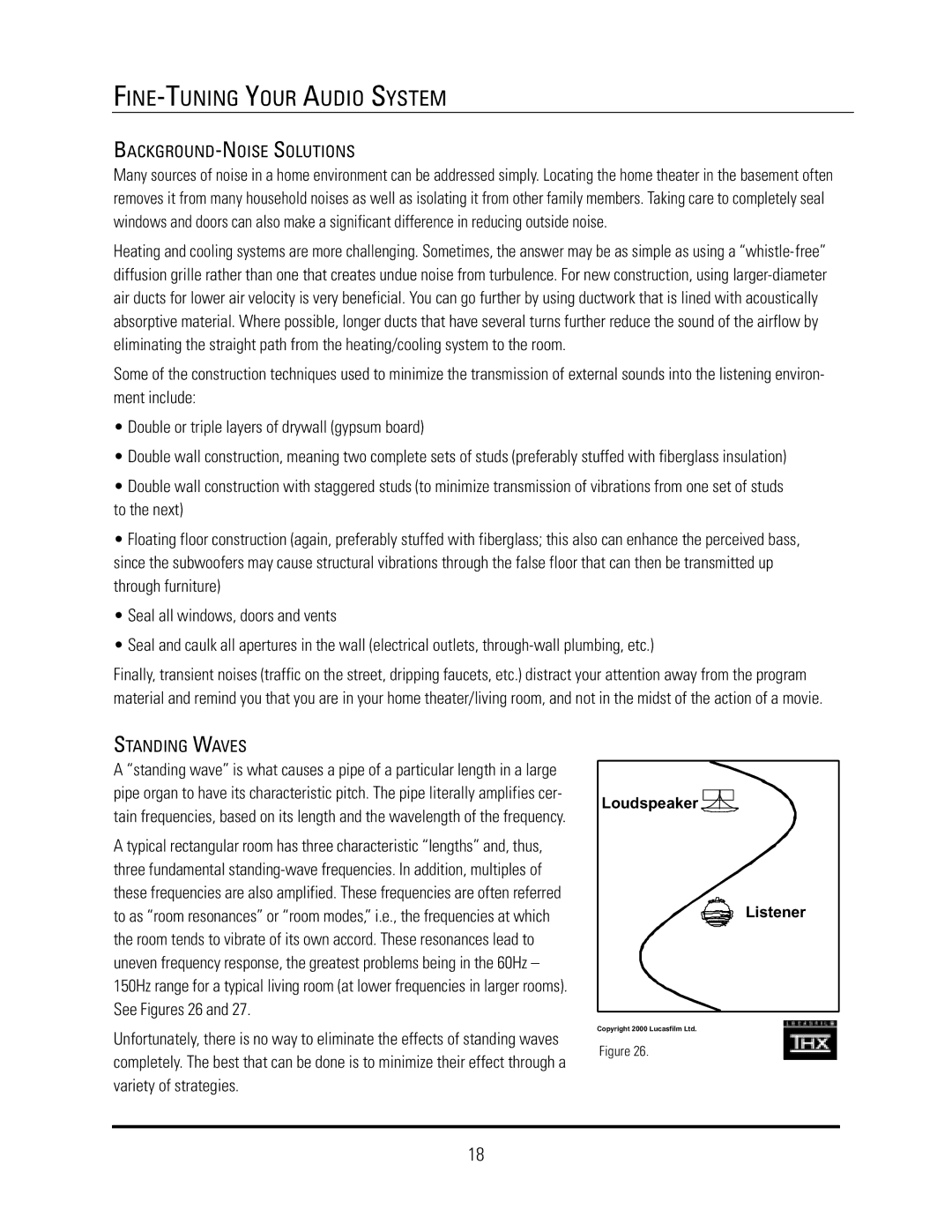
FINE-TUNING YOUR AUDIO SYSTEM
BACKGROUND-NOISE SOLUTIONS
Many sources of noise in a home environment can be addressed simply. Locating the home theater in the basement often removes it from many household noises as well as isolating it from other family members. Taking care to completely seal windows and doors can also make a significant difference in reducing outside noise.
Heating and cooling systems are more challenging. Sometimes, the answer may be as simple as using a
Some of the construction techniques used to minimize the transmission of external sounds into the listening environ- ment include:
•Double or triple layers of drywall (gypsum board)
•Double wall construction, meaning two complete sets of studs (preferably stuffed with fiberglass insulation)
•Double wall construction with staggered studs (to minimize transmission of vibrations from one set of studs to the next)
•Floating floor construction (again, preferably stuffed with fiberglass; this also can enhance the perceived bass, since the subwoofers may cause structural vibrations through the false floor that can then be transmitted up through furniture)
•Seal all windows, doors and vents
•Seal and caulk all apertures in the wall (electrical outlets,
Finally, transient noises (traffic on the street, dripping faucets, etc.) distract your attention away from the program material and remind you that you are in your home theater/living room, and not in the midst of the action of a movie.
STANDING WAVES
A “standing wave” is what causes a pipe of a particular length in a large pipe organ to have its characteristic pitch. The pipe literally amplifies cer- tain frequencies, based on its length and the wavelength of the frequency.
A typical rectangular room has three characteristic “lengths” and, thus, three fundamental
Unfortunately, there is no way to eliminate the effects of standing waves completely. The best that can be done is to minimize their effect through a variety of strategies.
Loudspeaker 
Listener
Copyright 2000 Lucasfilm Ltd.
Figure 26.
18
